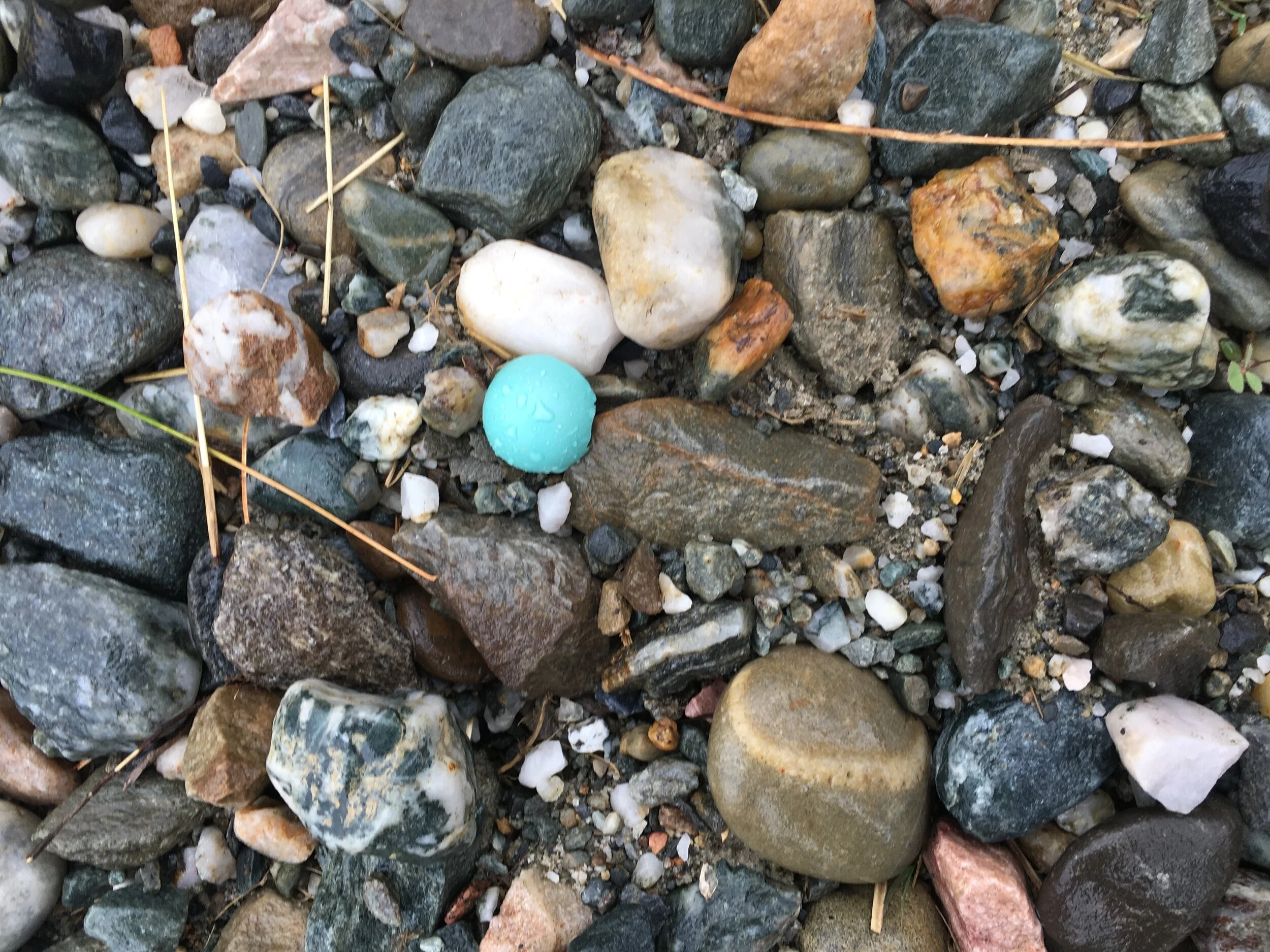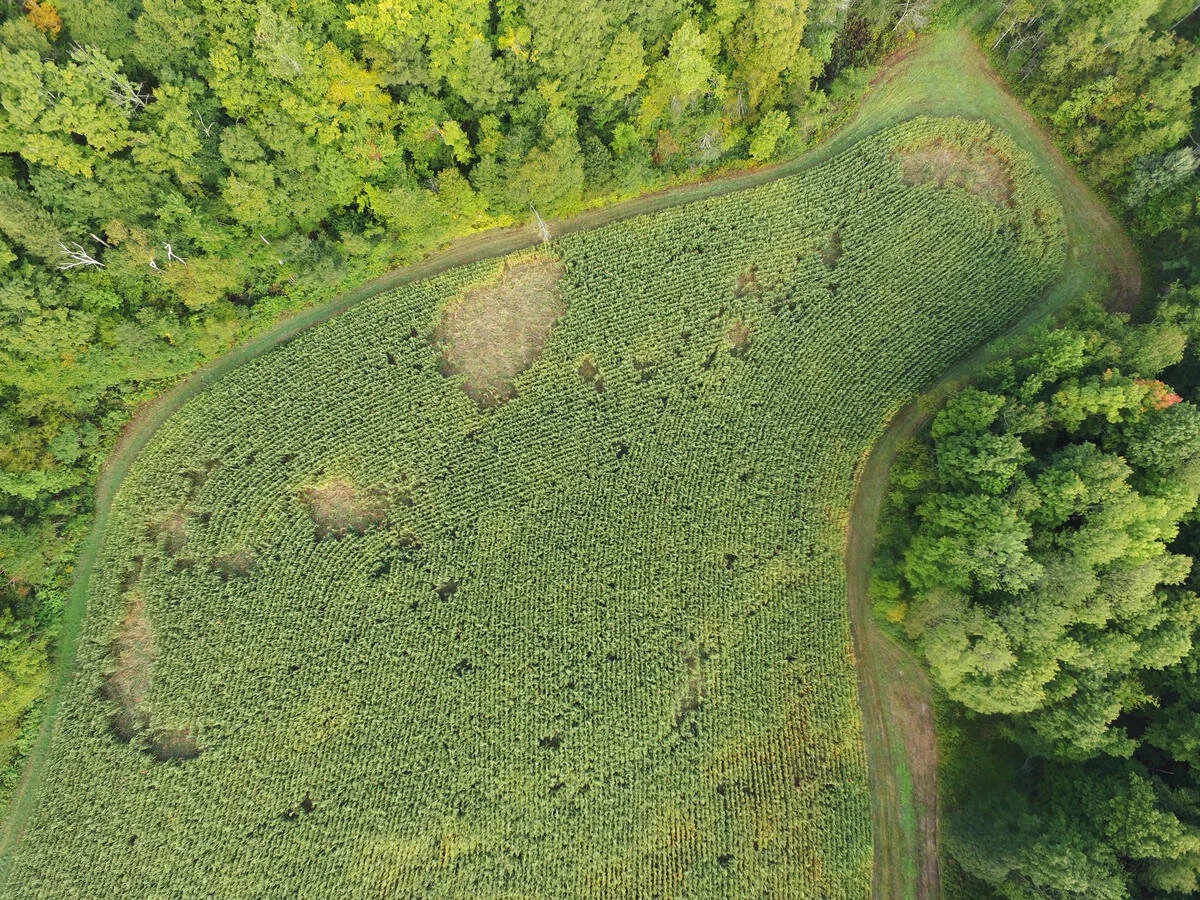Pollinator strips provide habitat and food sources for grass-nesting birds, songbirds, many other insects, and rodents. These in turn attract predators like raptors, fox, bobcat, coyote, mink, weasel, and fisher. There is an untapped knowledge base in how nutrients can be cycled in such systems, but as this model more closely mimics an ecosystem, this area of research and practice hold great promise for the resilience of future food systems.
Read MoreThis article originally appeared in 7 Days in May of 2017. The food lab continues to this day, with tasting events re-opening as soon as possible.
“Proof of Hoffman's skill is all over the lab. A bit of acorn jelly drizzled with soy sauce and chives and wrapped in a basswood leaf wouldn't have been out of place in a fancy Japanese restaurant.”
Read MoreLivingFuture founder and co-directer was recently interviewed by Kollibri terre Sonnenblume for Voices for Nature and Peace.
Read MoreSHO Farm LLC (a project of LivingFuture) and its CBDuck initiative were generously featured by the Aromatic Plant Research Center in this 6-minute video. With special thanks to Anjanette DeCarlo. Graphics and video editing by Ross Henry. An example of coexistence agriculture.
Read MoreVt. Farmers Can Legally Kill Bears Eating Their Corn, But Debate Over Practice Persists
LivingFuture’s Melissa Hoffman was interviewed for this piece on Vermont Public Radio after she learned that the neighboring dairy farm was responsible for killing 10 bears prior to the beginning of bear hunting season. She engaged in private correspondence with the farmer, who denied that he or his family had killed any bears, and denied knowing of the numbers killed by other hunters.
Read MoreShawn Smith gave a beautiful and comprehensive presentation about the coexistence strategies we’ve gleaned from living on a Vermont hill farm for over 17 years. SHO Farm is a sanctuary, wildlife preserve, and farm where we’ve learned increasingly intricate lessons for how to coexist and share a home with our wild kin.
Read MoreMost evident is the need to move capital into establishing durable and ethical food systems that bring land into a meaningful and functional relationship with all the communities, wild and human, that make life possible.
Read MoreFood systems and land stewardship will, by necessity, require the restoration of wildlife habitat, lest we lose the native flora and fauna that falls all too often at the hands of human agriculture and development. Livestock grazing dis-favors grassland bird, pollinator, and wildlife habitat, and costs the missed opportunity of restoring perennial, carbon-sequestering, resilient tree-based agricultural systems where they would naturally thrive.
Read MoreLeading scientists and conservationists are proposing that up to 50 percent of the earth’s land and oceans be protected in the coming decades. While some view the goal as unrealistic, proponents say it is essential for preserving the natural systems on which life itself depends.
“Nature must also be integrated into the places where people live, says Tabor. “The biggest misconception about Half Earth is that there is going to be a bizarre construction where people live on one side and nature lives on the other,” he said. “That doesn’t work in terms of ecological function, and it doesn’t work because there is conservation value outside of protected areas.”
Geoff Lawton has played a big role on the global stage embodying the sophistication and scientific elegance of permanent, self-regenerating food systems and habitat design. Combining multiple bodies of knowledge across climates worldwide, he is positioned to guide food system designers, funders, land owners, new students, city planners, and farmers in how to achieve an abundant and healthy future. He has given his life to serving this larger purpose, catalyzing others in the practice of permaculture through teaching, writing, a massive body of instructional videos, and consulting.
Read MoreThe benefits of integrating wild and rescued farm animals into a regenerative vegan farming system are endless. We are just beginning to scratch the surface of what’s possible, and uncover the many opportunities for ecological enhancement alongside non-human and human animal health and wellbeing. If you don’t have your own food system to draw from, find a local organic vegetable farm — there are countless possible synergies between them and sanctuaries
Read MoreAs we move forward in designing the food systems of the future, the writing is clearly written in the research: We MUST devote ongoing research, resources, funding, subsidies, and implementation of agricultural strategies and farm conversions that favor one of the most impactful climate-mitigating strategies in meeting this central human need: Plant Food!!
Read MoreLivingFuture’s co-director and SHO Farm co-owner Melissa Hoffman was interviewed by journalist Jessica Scott-Reid for this March article in Planet Friendly News.
Read More“Julia Watson’s lush and meticulous new book, Lo—TEK: Design by Radical Indigenism, provides a blueprint for sustainable architecture in the 21st century.”
Read More“But once they started learning about agriculture, they were struck by the paradox that to successfully grow vegetables, so many animal byproducts are used.”
Read MoreWe appreciate that domestic breeds of animals can be cared-for in sanctuary, and can also graze in a polyculture system, with attention given to providing vital pollinator habitat. Debates regarding the capacity for well-managed grazing operations to contribute a significant impact in offsetting carbon are addressed in this article.
Read MoreWe are so fortunate to have an abundance of methods for growing healthy, staple plant foods like grain and legumes. Unfortunately, these methods aren’t the rule for annual agriculture, but rather the exception. As we move into climate-friendly and health-enhancing food systems, we can implement the proven methods of farmers like Larry Kandarian.
Read MoreCarbon market credit prices “are far too low to drive down emissions. A recent analysis found that oil and gas company emissions in California have gone up in the period the California carbon market has been active. Polluters benefit when carbon credits are cheap and abundant and have even succeeded in getting most of their credits for free.” Source
Read MoreOne of the most inspired and inspirational interviews, from John O’Donohue’s sonorous voice, to his communication of the spirit of the living land. Krista Tippett interviews him in this podcast episode “On Being”
Read More“Shifting to a diet rich in plants is a demand-side solution to global warming that runs counter to the meat-centric Western diet on the rise globally. That diet comes with a steep climate price tag: one-fifth of global emissions. If cattle were their own nation, they would be the world’s third-largest emitter of greenhouse gases.”
Read More






